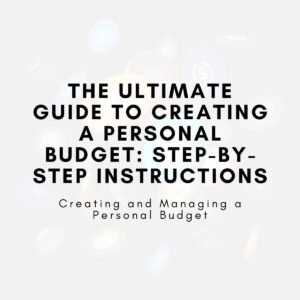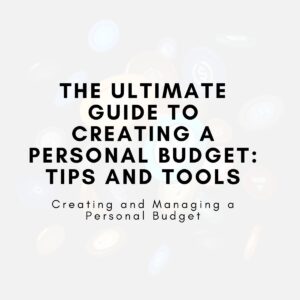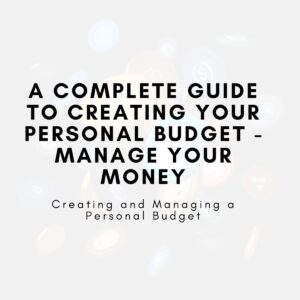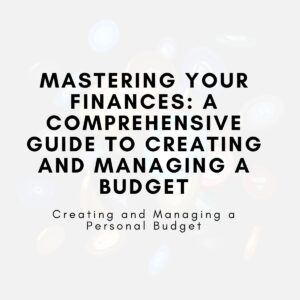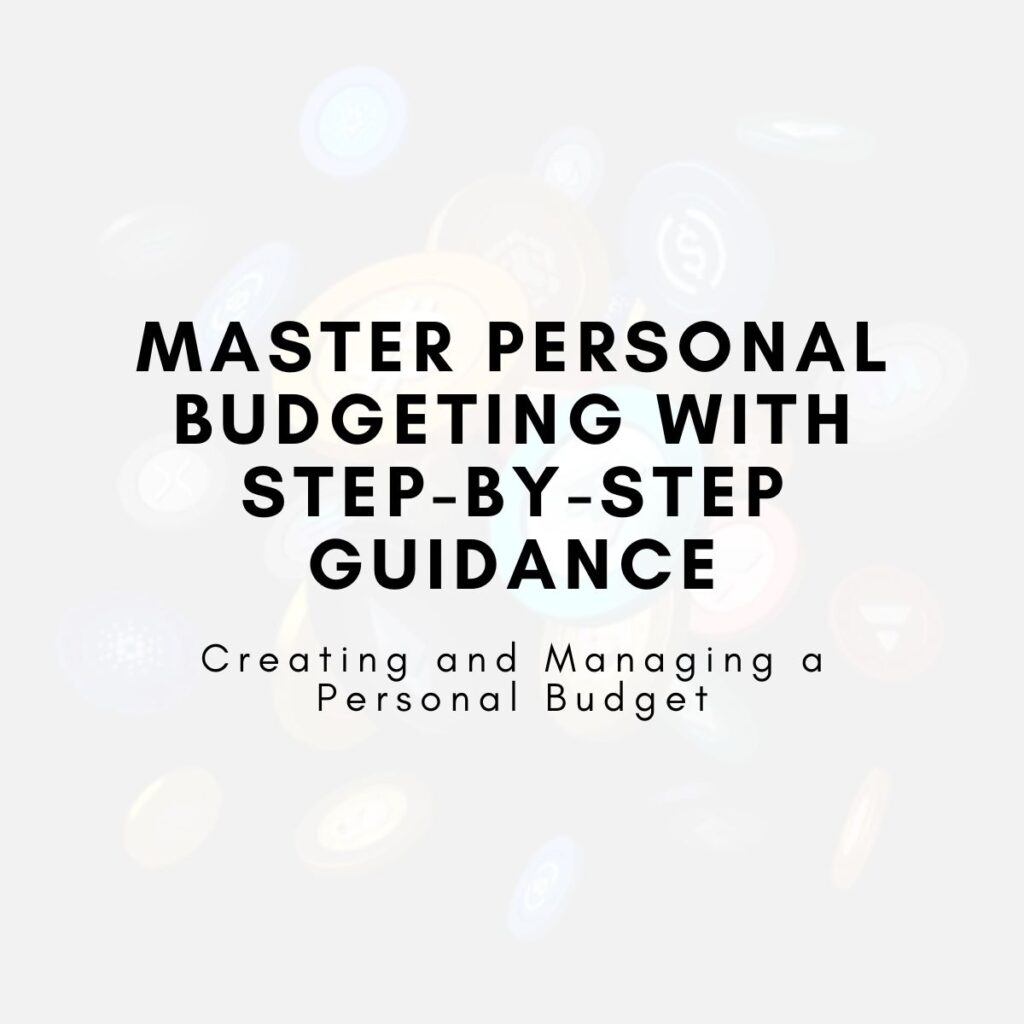
How can you master personal budgeting with a step-by-step guide?
Mastering personal budgeting is the key to managing your finances effectively. This guide provides step-by-step instructions for creating a budget, understanding your income and expenses, and setting financial goals. With clear examples and actionable tips, you’ll learn how to make budgeting work for you and gain control of your financial future.
Introduction
Mastering your personal budget is one of the most important skills you can develop for achieving financial stability and success. By creating and sticking to a budget, you can track your spending, save for future goals, and make smarter financial decisions. Whether you’re trying to pay off debt, save for a major purchase, or simply better understand your cash flow, a well-structured budget provides the foundation for long-term financial health. This step-by-step guide will show you how to set up and manage your budget, offering practical tips and real-world examples to help you stay on track and meet your financial goals.
The Importance of Personal Budgeting
Gain Control Over Your Money
Creating a personal budget allows you to gain control over your finances by tracking where your money is going each month. For example, if you’re spending $400 a month on eating out, a budget can help you assess if that’s too much compared to other essentials like rent or savings. It helps ensure that your spending aligns with your priorities and long-term goals.
Achieve Financial Goals
With a budget, you can set and work toward specific financial goals. For instance, if you want to save $5,000 for an emergency fund, you can divide this goal into smaller amounts, like saving $500 each month. Your budget will help you track this goal and keep you motivated, as you see your savings grow month after month.
Avoid Debt and Improve Financial Health
A personal budget helps you avoid overspending, which can lead to debt accumulation. For example, by limiting discretionary spending (like dining out or shopping), you can free up more money for savings and debt repayment. Over time, this strategy can improve your financial health and reduce financial stress.
Step-by-Step Guide to Creating Your Personal Budget
Step 1: Calculate Your Monthly Income
Start by determining your total monthly income, which includes your salary, freelance earnings, passive income, and any other sources of income.
For example, if you earn $3,000 from your full-time job and $500 from side gigs, your total income is $3,500. This figure serves as the foundation for your budget.
Step 2: List Your Monthly Expenses
Next, list all your monthly expenses. Break them into two categories: fixed expenses and variable expenses.
Fixed Expenses: These are regular monthly payments that don’t change, such as rent/mortgage, utilities, insurance, and car payments.
Example:
- Rent: $1,200
- Car Payment: $300
- Insurance: $150
- Internet: $50
Variable Expenses: These are expenses that fluctuate each month, like groceries, entertainment, and transportation.
Example:
- Groceries: $350
- Entertainment: $200
- Gas/Transportation: $150
This categorization helps you understand where your money is going and where you might be able to cut back.
Step 3: Set Financial Goals
Once you’ve identified your income and expenses, set specific financial goals. These can be short-term (e.g., paying off a credit card) or long-term (e.g., saving for retirement).
For example, if you want to pay off $3,000 in credit card debt in 6 months, you’ll need to allocate $500 each month toward that goal. Including these goals in your budget ensures you’re intentionally working toward them.
Step 4: Choose a Budgeting Method
There are several budgeting methods to choose from, and the best one depends on your preferences and financial goals.
Here are three common budgeting methods:
The 50/30/20 Rule: Allocate 50% of your income for needs, 30% for wants, and 20% for savings and debt repayment.
Example:
If your monthly income is $3,500:
- 50% (Needs): $1,750 (for rent, groceries, insurance)
- 30% (Wants): $1,050 (for entertainment, dining out)
- 20% (Savings/Debt): $700 (for savings, debt repayment)
Zero-Based Budgeting: Assign every dollar of your income to a specific expense or savings goal.
Example:
If your income is $3,500, your budget could look like this:
- Rent: $1,200
- Groceries: $350
- Savings: $500
- Debt Repayment: $600
- Entertainment: $250
- Miscellaneous: $200
The Envelope System: Use cash for discretionary spending and allocate specific amounts to different envelopes.
Example:
- Groceries: $350
- Entertainment: $100
- Gas/Transportation: $150
Each envelope represents a spending category, and once the cash is gone, you stop spending in that category.
Step 5: Track Your Spending
Tracking your spending is key to sticking to your budget. Use a budgeting app or spreadsheet to monitor where your money is going. For example, apps like Mint automatically track your spending and categorize expenses for you.
Alternatively, you can use a simple spreadsheet to manually input your expenses and check if you’re staying within the set limits for each category.
Step 6: Review and Adjust Your Budget Regularly
A budget isn’t static—it should be reviewed and adjusted regularly to reflect changes in income or expenses. For example, if you receive a bonus or have a decrease in income, you may need to adjust your budget.
If you’ve been successful at cutting down on discretionary spending (e.g., eating out less), you can redirect that money to savings or debt repayment.
Tips for Sticking to Your Budget
Automate Savings and Bills
Automating your savings and bills ensures consistency and helps you avoid late fees or missed payments. Set up automatic transfers to your savings account or automatic bill payments for fixed expenses. For example, you could automate a $300 monthly transfer to your emergency fund and have your rent paid automatically each month.
Cut Back on Unnecessary Expenses
Take a close look at your variable expenses and see where you can cut back. For example, if you’re spending $200 a month on entertainment, consider reducing that by going out less or finding free activities. Use the savings to build your emergency fund or pay down debt.
Track Your Progress and Celebrate Milestones
Regularly track your progress toward your financial goals. If you’re successfully saving for a vacation or paying off a debt, take time to celebrate those wins. For example, when you pay off a credit card balance, reward yourself with a small treat (that fits within your budget, of course!).
Using Tools to Simplify Budgeting
Budgeting Apps
Apps like Mint, YNAB (You Need A Budget), and EveryDollar make it easy to track and manage your budget. For example, Mint syncs with your bank accounts and automatically categorizes transactions, making it easier to monitor spending in real time.
Spreadsheets
If you prefer a more hands-on approach, you can create a custom budget using Google Sheets or Excel. Use a simple template that includes your income, expenses, and savings goals.
For example, you could create a column for each category (income, fixed expenses, variable expenses, savings) and track your progress throughout the month.
Conclusion
Mastering personal budgeting is a powerful way to take control of your finances and work toward your goals. By following the steps in this guide, you’ll be able to create a budget that works for you, track your spending, and make adjustments as needed. Whether you’re saving for the future, paying off debt, or simply getting your finances in order, budgeting is a tool that empowers you to achieve financial success. Stay committed, adjust when necessary, and celebrate your progress along the way.
Key Takeaways
- Creating a personal budget helps you understand where your money is going and gives you control over your finances.
- Set clear financial goals and break them down into achievable steps to stay on track.
- Choose a budgeting method (e.g., 50/30/20 rule, zero-based budgeting, envelope system) that works for your lifestyle.
- Regularly track your spending and review your budget to make sure it aligns with your goals.
- Automate savings and bills to make budgeting easier and more consistent.
- Use budgeting tools like apps or spreadsheets to simplify the process.

